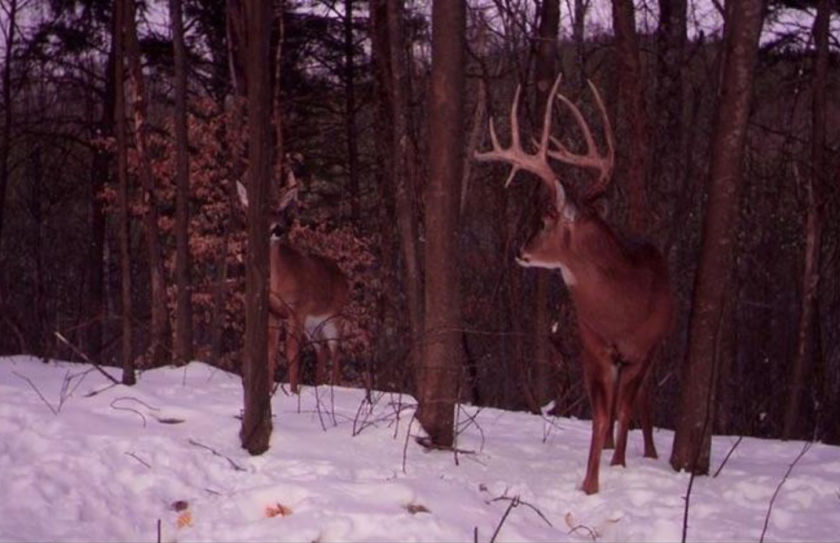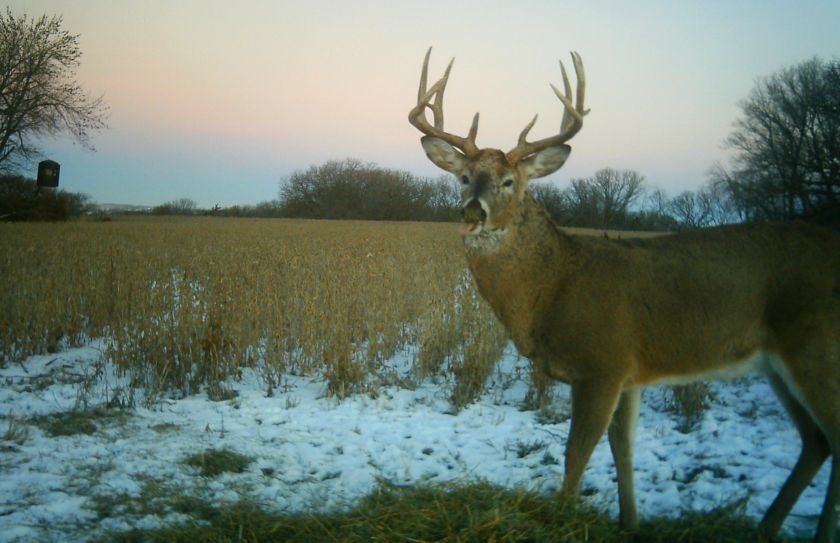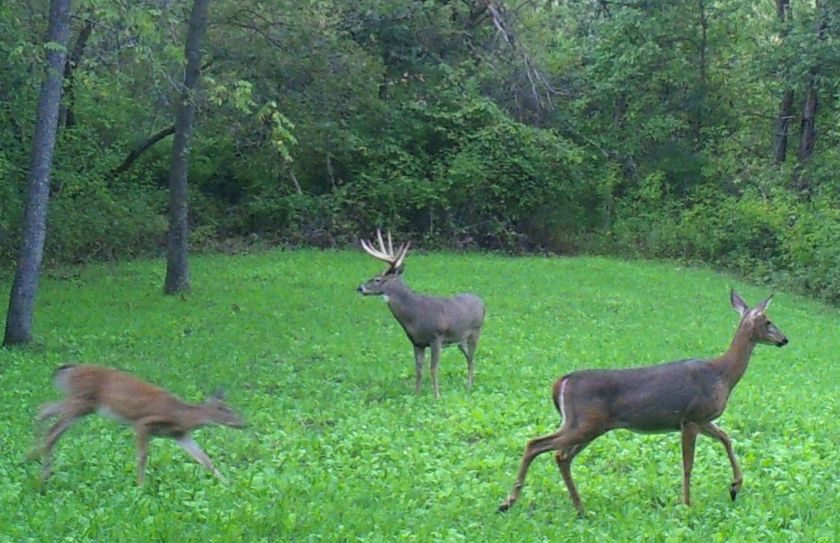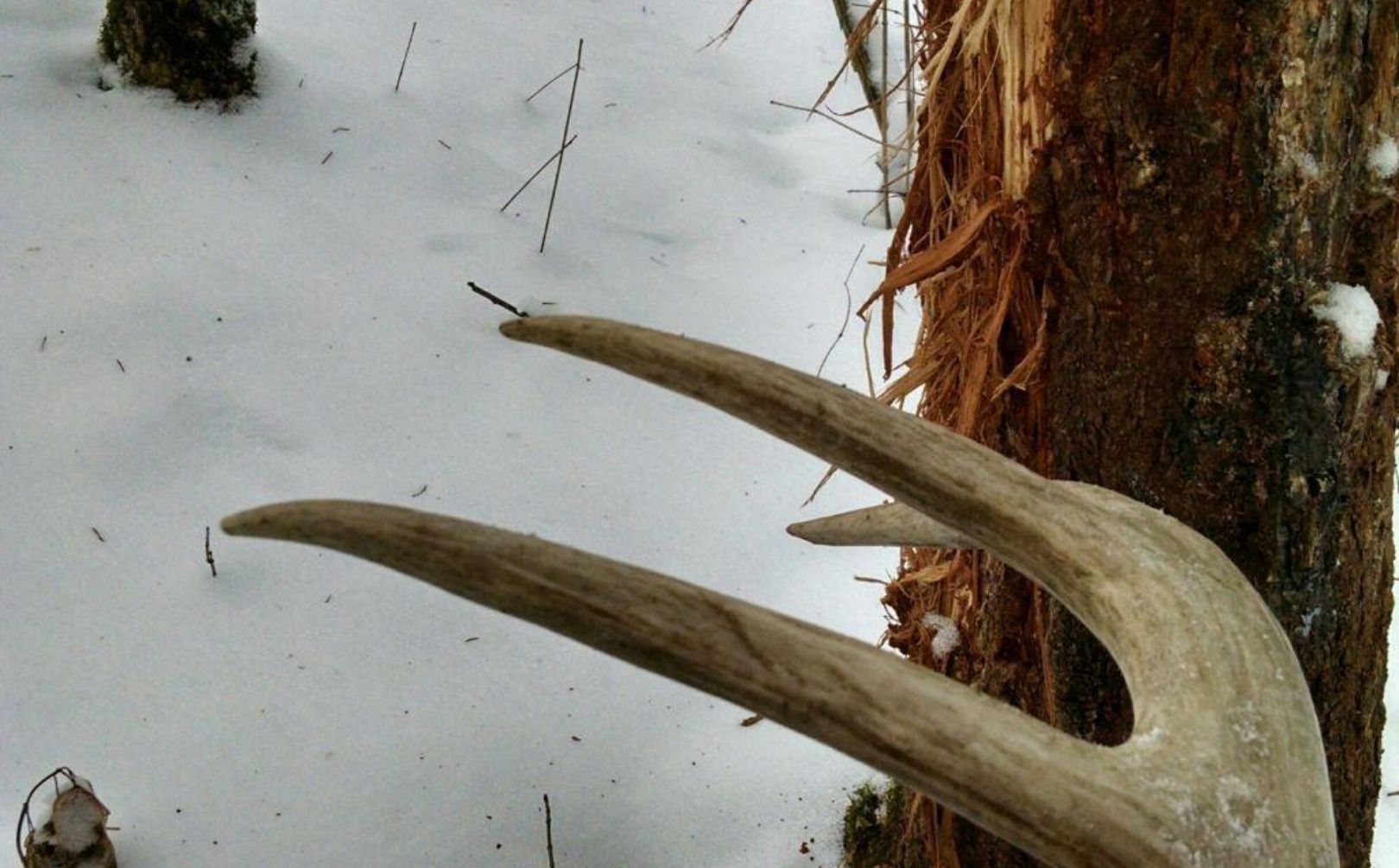
Each year it never fails. As I begin the season's client visits with a week of parcel visits in January, there is a consistent suprise that awaits a handful of landowners: Deer sign! Parcels that were empty of deer during November and December, suddenly are full of beds, pellets and signs of obviously abundant deer usage.
It doesn't happen on every piece of hunting ground, but when it does it is an outstanding discovery. Why? Because it helps to unravel one of the many clues that reveal the ingredients needed for late season mature buck hunting success.

*These late season mature buck strategies, as well as most any other whitetail related hunting tactic, are covered in my recently completely trilogy of Advanced Whitetail Strategy books, including the most recently published"Mature Buck Success by Design", which details how to scout, prepare, forecast for and consistently kill mature bucks.
There are several key ingredients needed to produce late season mature buck hunting opportunities, with none more important than an established bedding to feeding deer movement. However, hunting pressure management is critical too, and the evidence of its impact is never more clear than during those January parcel visits! During November and December, deer will be found on lands that contain great late season cover to food movements, but they can't be found on those same lands during periods of high hunter impact. And that's where the problems begin on an otherwise attractive property. Think of your ability to establish a reliable bedding to food source movement as your opportunity to create late season mature buck hunting success, and hunting pressure management as your opportunity to reliably maintain that movement, or not. When you combine great food, cover, and hunter management together...watch out...enjoy...and get ready for OUTSTANDING late season hunting opportunities!
Late Season Mature Buck Movements
During the early season, mature bucks are scattered across a much greater landscape than during the late season. Adequate food and cover options are often plentiful, and well distrubted across the range of whitetail habitat during August and September. In some cases lands that can't hold a deer during December, offer some incredible hunting just 2-3 months earlier. During the November whitetail rut mature bucks can be scattered randomly in search of their next doe, and opportunity often exists whether the habitat is outstanding or not. However, when December comes barreling in with snow, frigid temps and leafless woodlots, deer are forced into a survival mode seeking scattered, adequte pockets of both cool season food, and cover, including:
1. High stem count densities of tall grasses, hardwood regeneration, shrubs and scattered conifer
2. High volume of forages such as hardwood regen browse, briars, corn, soybeans, brassicas and lush small cereal grains.Simply planting or creating those late season mature buck hunting habitat conditions, however is not enough. The pattern of deer movement from cover to food and back again has to be allowed to repeat itself continuously throughout the entire season.
Hunting Pressure Destroys Opportunity
No matter how high the quality of habitat you locate or create, that level of quality can never overcome the devestating effects of hunting pressure. Why do we often find incredibly high levels of deer usage weeks after the season is over, on lands that were virtually devoid of deer during the season? Because no human has entered the land for several weeks. And what that shows is that often it is not the habitat created for late season mature buck hunting success that is the problem, but the folks who are using those habitat creations for hunting.
Just as powerfully as an adequate combination of late season habitat components is in its ability to create success, it can just as easily be destroyed with invasive hunter movements. In all that steps that you can possibly take to create late season mature buck opportunities, the movement of cover to food for mature bucks has got to be prioritized and maintained. If you can allow that to condition to flourish, great things will happen...and if not, well, don't be suprised if your land has a lot more deer in January and February, than during November and December.
"Boring" is a good thing, when it comes to late season mature buck movements. The longer the length of time and more consitent the daytime bedding to evening food sources are maintained, the greater the opportunity is that you will create. Often you will see steady progress developing from November to January, when you allow a "boring" movement to continue day after day. The same deer, enter the same food sources, after traveling from the same bedding areas, day, after day, after day. The only change? A really awesome thing occurs...even if it occurs slowly! The longer you allow the movement to continue, the more that the deer within the entire neighborhood begin to recognize the phenomenom. This is something that doesn't often take place in the whitetail world! "Quality food, quality cover, very little hunting pressure"...really, how often does that happen? But the key is that, it can, and when it does, the hunt is on!
Late Season Mature Buck Hunting Tactics
1. Early Morning Precision Attacks:
Let's face it, late season mature buck hunting during the morning hours can be risky business! Deer prefer to be bedded during the coldest periods of the day to conserve energy, which is typically right at daybreak. With a huge premium that needs to be placed on hunting evening food source movements the quickest way to hurt your efforts is to potentially spook deer within the core of that movement-the bedding area! However, there are opportunities to be found for the savvy hunter, but you absolutely have to avoid the following:
*Avoid walking through food to get to bedding area stand locations
*Stay well away from the many eyes, ears and noses of doe family group bedding areas that should be located directly adjacent to the evening food source
*Make sure to never enter between the food source, doe bedding or buck bedding
*And don't run into the temptation of attempting to beat a buck back to it's bedding area
The key to a great late season buck hunt lies within your ability to access the backside end of the food source to bedding movement. This is where the mature bucks will potentially bed, as well as push does towards if the rut is still hanging on a bit. The reason that does are pushed this way...and not towards the food, is simply because of the lack of cover within and closer to the food source. My 13 year old stepson Dante narrowly missed an opportunity with a mature buck on December 7th of this year, while hunting the backside of long movement of food source to bedding. As a giant pushed a doe towards us the doe circled out and away. The buck unfortunately eventually followed the same path and if Dante had a few more years of shooting experience under his belt, the 70 yards shot through a few trees would have been no problem with the muzzleloader. Instead, no shot was fired and he will carry the memories of our late season encounter (including his uncontrollable shaking and giant grin) for decades to come!
Entering a morning stand around the food sources and away from bedding areas, all while attempting to locate yourself on the backside of potential mature buck bedding is tough, but it can be done. If the bedding areas are hidden behind walls of conifer or the lay of the land the hunt can take place even more precisely, but the key is in your ability to avoid deer on the way in, and out of the stand. When it comes to late season morning hunts, "never say never", because there is a time and a place for every hunting tactic and don't miss out if the conditions are ripe! Whether you are morning hunting, or even looking to take advantage of the next tactic for "Mid-Day Feeders", make sure that you do not potentially destroy your high-value evening sits.
2. Mid-Day Feeders:
When temperatures dip into the low teens, single digits and worse...deer just really don't feed much during the night. Survival mode kicks into high gear during extreme temperatues and deer seem to have an incredible ability to balance between the effort that it takes to feed vs the energy conserved while staying tucked into a bedded position and waiting for the conditions to improve. When do they typically improve? During the middle of the day!
Some of my favorite late season days take place when the morning lows are in the single digits, but the afternoon forecasted highs are in the 30s or better. Deer that are forced into a survival mode during the middle of the night while missing 1-2 feeding times (deer feed 5xs during a 24 hour period) due to extremely low temperatures, are then placed into a high-octane feeding mode when the mid-day highs heat up! It pays to be in the deer stand during these conditions whether your are taking an early seat to watch a hidden evening food source adjacent to heavy cover, or by avoiding bedding areas to hunt the backside, or side of a well established bedding to food source movement. 2-10 year old hardwood clearcut pockets, mature oak flats and briar-choked fields or native regen are some of my absolute favorite late season mid-day food source to hang a stand near. By learning to recognize the conditions within the forecast, you can easily find high quality late season sits that other's may miss. Are you tempted to exit your morning stand for lunch or a football game during the middle of the day? Well, I have to admit that Dante and I were on December 7th, and we spooked a giant almost directly under our stand when we returned for the evening sit. At least the Detroit Lions won, but I wish now that my priorities were in check for taking advantage of afternoon highs in the upper 30s!
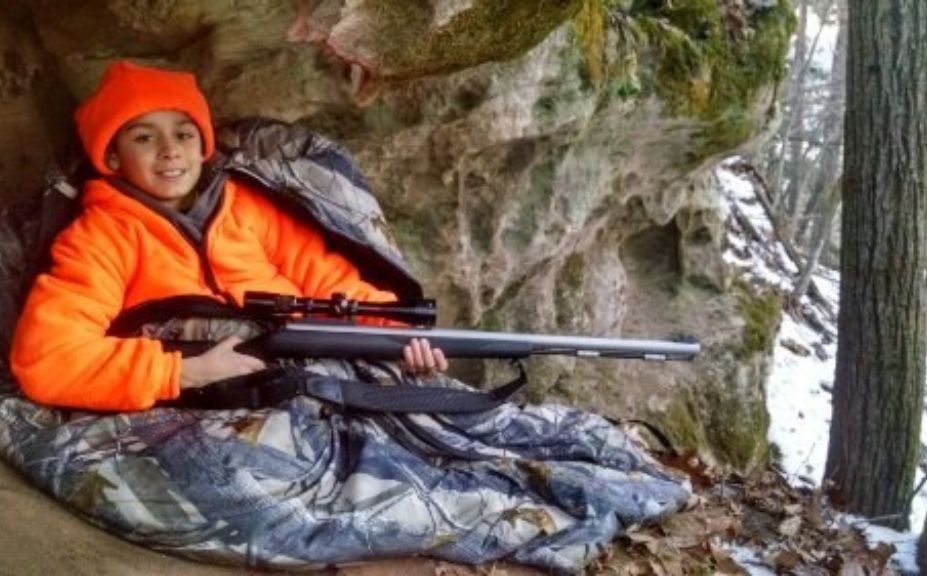
3. Premium Evening Mature Buck Hunting:
Late season mature buck hunting opportunities would not be complete without discussing an evening sit. Successfully executed morning sits can be risky, quality mid-day sits can be random and infrequent, but evening sits can offer the most definitive time to kill a mature buck during the entire season! Have you created or discovered these 5 conditions?
*High quality, unpressured evening destination food sources?
*Unpressured travel patterns to access the evening food source?
*Unpressured bedding areas of both doe family groups and bucks that support the evening food source?
*Dwindling neighborhood food sources?
*Shrinking "unpressured" neighborhood hunting grounds?
If you have...take advantage of them! Do it, don't wait, and enjoy! Because although easy to create, those 5 conditions rarely are allowed to come together to build the perfect storm of extremely high quality late season mature buck hunting opportunities. If I am hunting during a firearm season I hunt the evening food source from afar, and if I am using a bow I hunt the travel corridors or a small food source that serve to funnel deer to the evening destination food source. As long as you can preserve the movement from bedding to feeding, than it's a great opportunity for a sit!
Conclusion
There are some out there who will say that there is no greater time to predictably kill a mature buck than during the late season, and I would have to agree! Cover and food options become extremely limited, hunting pressure has been applied liberally across the landscape and by the time December rolls around the options for quality whitetail habitat that still hasn't been invasily intruded upon, are extremely limited. However when you find it, when you can create it, and when you hunt it appropriately...your ability to harvest a mature buck can be absolutely outstanding during the late season! Are you ready? Is your land ready? If so...enjoy your patience and hard work! If not...you have several months to make changes for next season to insure your own late season mature buck hunting success. If the conditions are ripe right now, make sure to target morning, mid-day and evening sit rotations to take advantage of the abundant opportunities that exist during the woods during the late season!
